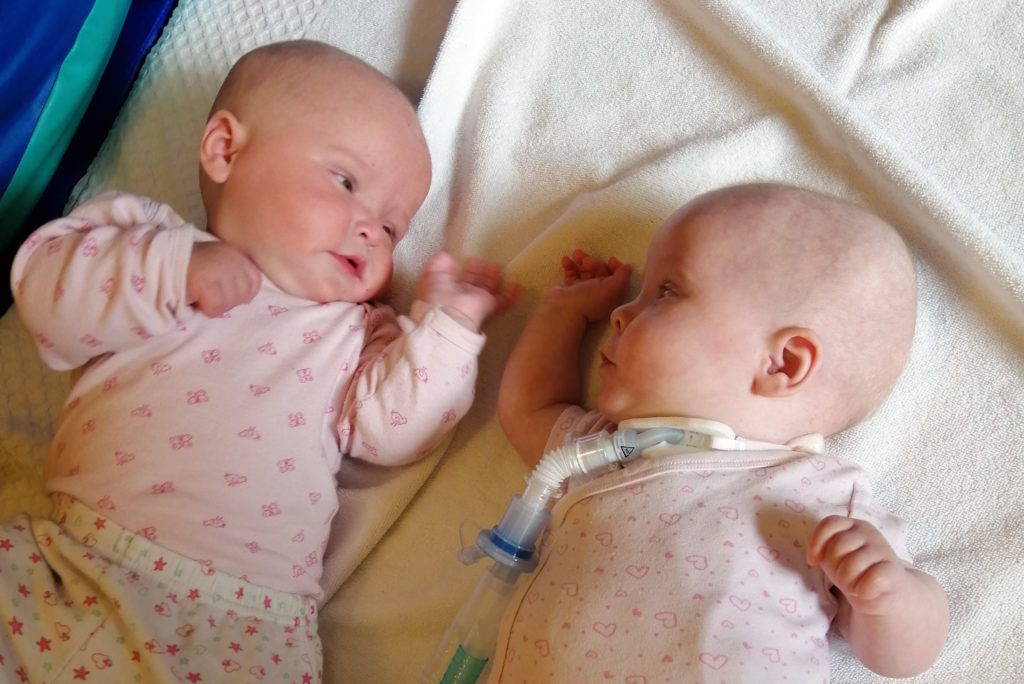
15Five – Technology Integrations
September 20, 2019
Bollywood, blockbusters and a $5 billion industry: How Indian company Eros Now is redefining online video
September 20, 2019How AI and Teams are benefitting the littlest of patients
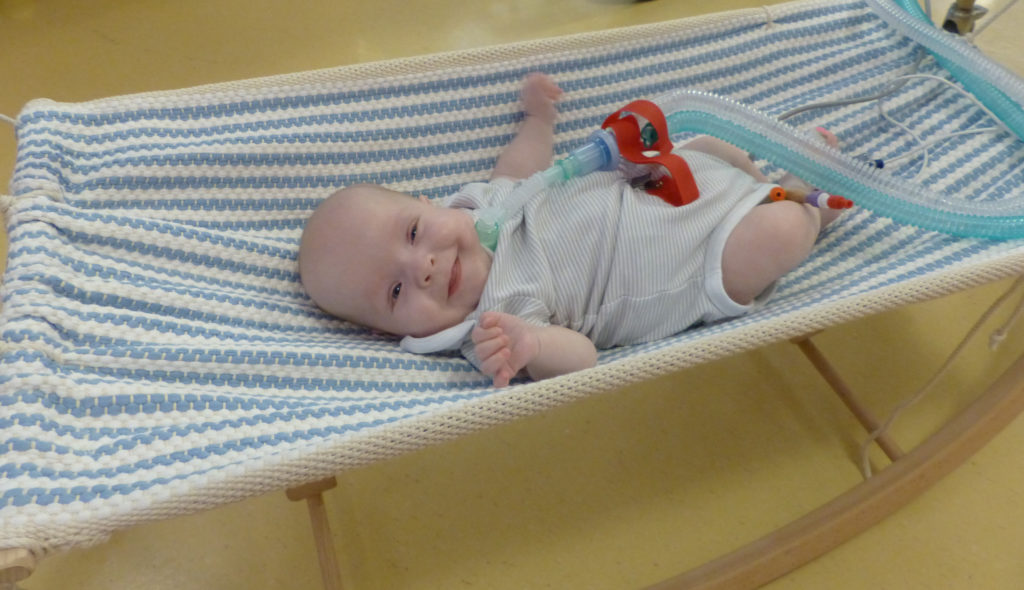
Last December in Germany, beautiful twins Amelia and Bianca were born. The two share the same lively eyes and sweet smiles. But, unlike her sister, Bianca’s health is perilous. She was born with heart problems, is missing ribs and vertebrae and has only one kidney. She cannot breathe without the help of special medical equipment.
The place Bianca calls home for now, Kinderhaus AtemReich in Munich, is the only one of its kind in the country. More typically, hospitals’ intensive care units (ICUs) are long-term destinations for children with critical breathing issues. At the nonprofit Kinderhaus AtemReich, based in a setting that looks more like a real home than a medical facility, 127 staffers care for 18 children who receive full-time medical attention, affection, have play time, and when appropriate, sit outside in the garden to get fresh air.
Bianca’s mother, Tamara Schaper, says when doctors recommended that at age 6 months, Bianca be moved from an ICU to Kinderhaus AtemReich, she was both “skeptical” and “afraid” she “couldn’t see Bianca and that she could never go home again.”

Now, she is “glad” Bianca is there and sees her two to three times a week, more if she can, making the four-hour round trip from where she lives.
“The AtemReich staff are doing a great job.” They attend to Bianca’s medical issues, but they see her first as a person, not a patient, Schaper says. “They give the kids the feeling that they are normal children.”
That is the gift and the goal of Kinderhaus AtemReich, which translated loosely into English means “Children’s house full of breath.” In time, some of the children may go home; others are terminally ill. All of them require ventilators to breathe. Most cannot speak.
“The most important thing for us is that the children today, here and now, have a good day with as much quality of life as possible.”
Felicitas Hanne, Kinderhaus AtemReich director since it opened in 2006, is often lauded for her can-do attitude, big heart and passion about the facility’s mission – “The most important thing for us is that the children today, here and now, have a good day with as much quality of life as possible.”
But, as both the facility’s main administrator and director, Hanne is constantly faced with a non-stop avalanche of forms, paperwork and staffing issues.
In the past, communication among the staff was mainly done using paper and email. Caregivers were using handwritten notes for daily updates on the children. To keep track of each child’s medical information and other records, Hanne was using Microsoft Access, an older database program only she and one other administrator had the authority to use.
Recruiting and retaining employees was another challenge – nonprofit organizations like Kinderhaus AtemReich have difficulty competing with hospitals when it comes to pay and benefits. And because the staff is on a 24/7 cycle, if one person was out sick, and another stepped in, some duties could get missed like the wrong medications being requested.
Although there was a lot of love and compassion in this house, there was not enough order.
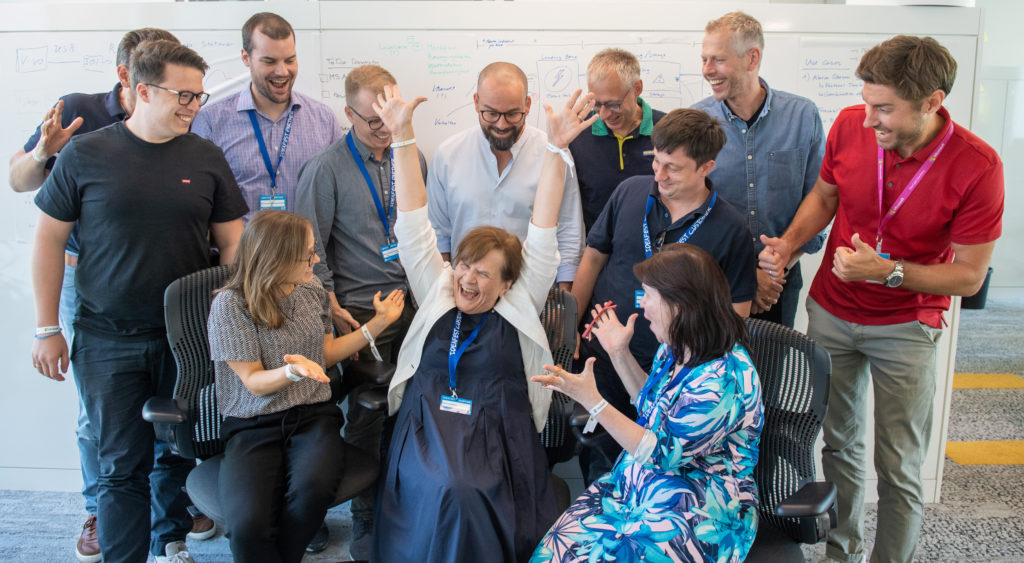
So last summer, when Hanne attended Microsoft Germany’s #Hackfest2018 in Munich, a two-day Microsoft employee hackathon to help customers, partners and nonprofit organizations, she wasn’t sure what to expect.
At that time, “It was my great hope that Microsoft would help me to expand and improve my work with Microsoft Access database,” she says.
But as Hanne spoke to the Microsoft employees about Kinderhaus AtemReich, “We listened really carefully to what she was saying about the children, and I think half of our colleagues had tears in their eyes,” says Volker Strasser, a Microsoft digital adviser who normally works with large companies. Moved by the children’s challenges and those faced by Kinderhaus AtemReich, he became the project lead for the effort.
Andre Kiehne, executive sponsor of the project and a member of the Microsoft Germany leadership team, also remembers talking to Hanne that first time. It was an “emotional moment,” he says. His twin daughters were born 13 years ago in the same children’s hospital where the idea for Kinderhaus AtemReich was raised, and around the same time. His girls were premature babies and faced some medical problems in their first weeks – “they are completely healthy now,” he says – but the worry he faced remains a fresh memory.
The night the hackfest ended, Strasser remembers being unable to sleep “as thoughts circled my mind as to how we’d help Kinderhaus succeed, how we could bring these ideas to life, and how we’d scale those ideas more broadly” for other potential and much-needed Kinderhaus AtemReichs in his country.
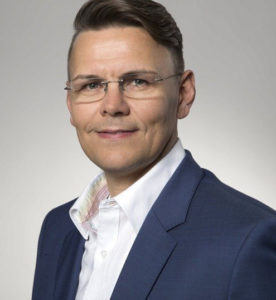
At 3 a.m., he got out of bed and started drafting a plan that would ultimately include bringing machine learning, artificial intelligence (AI), Microsoft Teams and a modern recruiting strategy to Kinderhaus AtemReich.
For the next year, the team met for a project call every Monday at 8 a.m. – “We put that meeting on Monday at that time because we wanted to start the week with the most important thing, Kinderhaus AtemReich,” Strasser says.
Hanne had no idea she would wind up with a dedicated army of 50 Microsoft volunteers and partners who, over the past year, have not only provided Kinderhaus AtemReich with a digital transformation, but who also spend their own time at the facility, about 5 miles from Microsoft’s Munich office, doing everything from helping clean out the cellar to tending the garden.
The technology solutions being put into place fit “the needs of AtemReich to get closer to the goal of more staff time with the children,” and less on paperwork, says Hanne. “That is what touches me most of all. This incredible combination of Microsoft and partner team members’ empathy, passion, know-how and time for our children can hardly be put into words because it is so great.”
Among the changes that have come to Kinderhaus AtemReich: shifting from a laborious, often manual, medical record-keeping system that only kept track of a child’s vital signs to a system that compiles information – such as heart rate, oxygen, breathing rhythm, blood pressure – from the children’s medical devices and uses machine learning, AI, IoT and Azure tools to produce data and analysis to see if there are safety or medically related problems or trends that should be addressed.
“Before, we just copied the data from the monitors onto paper. But we were not able to evaluate or compare the incredible amounts of data provided by our devices,” Hanne says. “Now we can evaluate and analyze data. This allows us to discover patterns in children and makes it possible to react faster than we could before.”
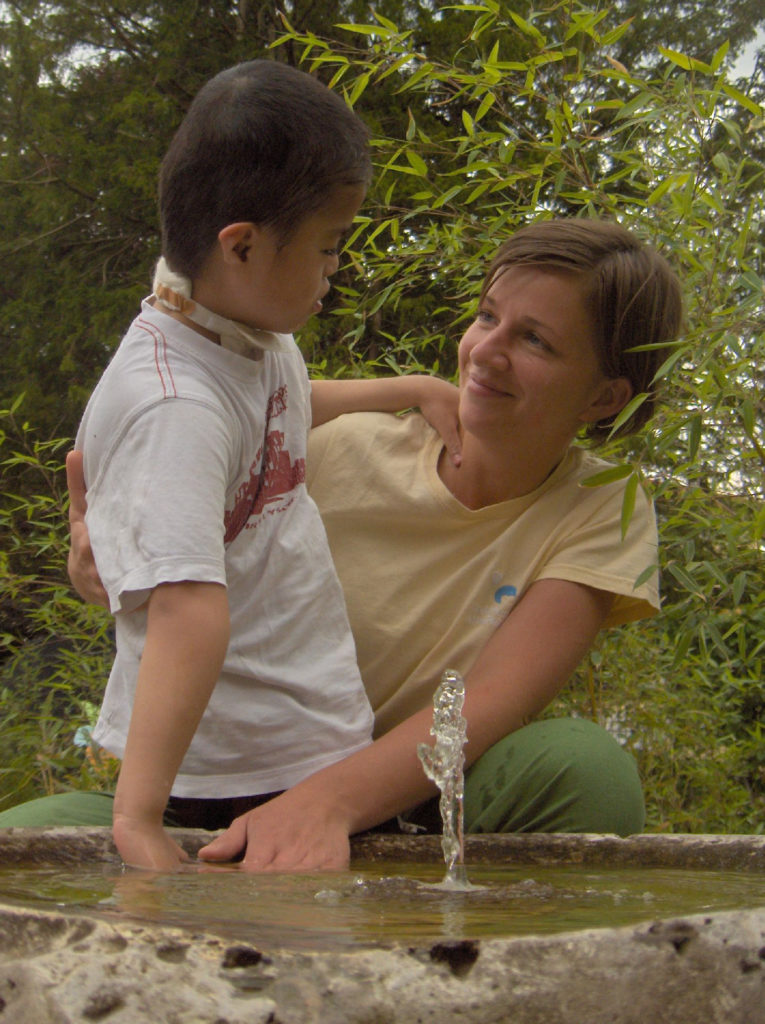
That proved to be crucial for Maxi, a 13-year-old who has lived at Kinderhaus AtemReich since he was a baby. Maxi, who is on a ventilator, also cannot see or hear. “He is totally restricted in his communication and interaction,” Hanne said.
Maxi was becoming increasingly agitated, physically hurting himself, and sometimes disconnecting himself from his ventilator out of frustration, a threat to his safety. It was “terrible,” Hanne said. “We could hardly hold him; we could not reach him anymore.”
Trying to figure out what was wrong was frustrating. But once the data from Maxi’s medical devices were collected and analyzed, his doctors discovered he was receiving slightly too much of one of his medications and reduced the dosage.
“Since then, Maxi has not had any more aggressive phases,” Hanne says. “The fact that it is suddenly possible to recognize things and patterns through the evaluation of data and thus achieve a positive change for a child is unbelievable.”
“Now we can evaluate and analyze data. This allows us to discover patterns in children and makes it possible to react faster than we could before.”
“It is a single go-to point for everyone,” says Strasser. “If I’m a caretaker, and I want to know something about a child, I go to Teams and say, ‘If I’m going from morning shift to evening shift, do I have to shift something?’ Or, ‘This information is important for today.’ And the doctors and therapists can put their documentation in Teams, all the special documents for the kids. It’s all in one place, it’s all up to date.”
Hanne says her daily “email flood” has been significantly reduced because of Teams, and the interaction between staff is friendlier and more fun thanks to smiley face emojis and GIFs. It also gives Hanne more time to do her job, which includes visiting with the children, something that is vitally important to her.
“When I go to the children and one of them sees me and comes running toward me, this makes me happy,” she says. “To experience the children, whose life expectancy was originally not even their first birthday, enjoy the sun and make trips, is a wonderful feeling of happiness for me. That I succeed in giving these very special children quality of life, joy and a positive everyday life – I can’t imagine anything more beautiful.”
Kinderhaus AtemReich also received a marketing makeover to help draw in more prospective employees, including recruiting videos on social media focused on the children and the staff. The effort has filled almost half of the facility’s 20 vacancies, says Strasser.
“It doesn’t matter if you see tubes or medical devices at first. Every child can be a happy child.”
Xbox games, especially created for the children at Kinderhaus AtemReich, are also in the works now, something some of the children will be able to play using the Xbox Adaptive Controller.
Because most games are mentally and physically too challenging for the children, the Microsoft Xbox team in Munich met with Kinderhaus AtemReich staff to figure out what the children could and couldn’t do, and plan to develop games to help with cognitive abilities, and a set-up with the Xbox Adaptive Controller adapted to the specific needs of the children.
Meanwhile, Tamara Schaper hopes to be able to bring Bianca home at some point. At Kinderhaus AtemReich, she recently introduced Bianca and Amelia to each other for the first time since birth.
“Both children looked at each other, cried and were very happy. You can’t describe it, but it was a very touching, emotional experience. Amelia and Bianca held hands, smiled. It was a wonderful day for both of them and also for me.”
When Bianca was born, “I was very desperate and didn’t know how to deal with my daughter’s illness,” Schaper says. “The AtemReich helped me see what a happy little girl I have – despite her illness. It doesn’t matter if you see tubes or medical devices at first. Every child can be a happy child.”
Lead image: Jason plays as nurse Sabrina Leick looks on at Kinderhaus AtemReich. Photo courtesy of Kinderhaus AtemReich.
The post How AI and Teams are benefitting the littlest of patients appeared first on Microsoft Malaysia News Center.


